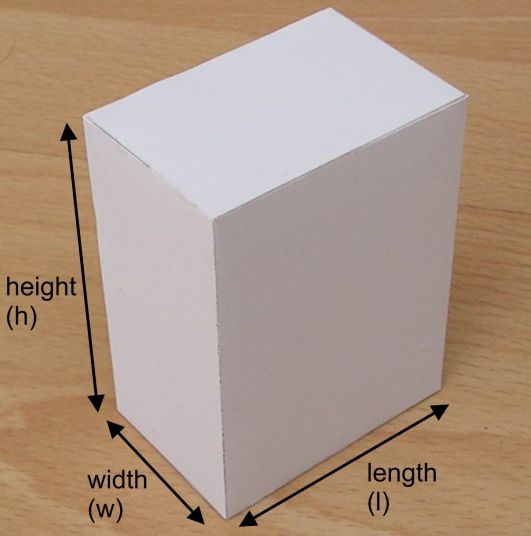Question #44e55
1 Answer
Explanation:
As it's written, the problem is missing information about the temperature of the gas, so I will assume that you're working at room temperature, i.e.
Now, the ideal gas law equation looks like this
#color(blue)(|bar(ul(color(white)(a/a)PV = nRTcolor(white)(a/a)|)))" "#
Here you have
#P# - the pressure of the gas
#V# - the volume it occupies
#n# - the number of moles of gas
#R# - the universal gas constant, usually given as#0.0821("atm" * "L")/("mol" * "K")#
#T# - the absolute temperature of the gas
Notice the units used for the universal gas constant
- atmospheres for pressure
#-> ["atm"]# - liters for volume
#-> ["L"]# - Kelvin for temperature
#-> ["K"]#
You can convert the pressure from mmHg to atm by using the conversion factor
#color(purple)(|bar(ul(color(white)(a/a)color(black)("1 atm " = " 760 mmHg")color(white)(a/a)|)))#
The next thing to do is calculate the volume of the box.

You know that for a rectangular prism, the volume is given by
#color(blue)(|bar(ul(color(white)(a/a)V = "length" xx "width" xx "height"color(white)(a/a)|)))#
Notice that the dimensions of the box are given to you in centimeters. The thing to remember here is that you have
#color(purple)(|bar(ul(color(white)(a/a)color(black)("1 dm " = " 10 cm")color(white)(a/a)|)))" "# and#" "color(purple)(|bar(ul(color(white)(a/a)color(black)("1 L " = " 1 dm"^3")color(white)(a/a)|)))#
The volume of the box will thus be equal to
#V = (5.0 color(red)(cancel(color(black)("cm"))) xx "1 dm"/(10color(red)(cancel(color(black)("cm"))))) xx (25.0 color(red)(cancel(color(black)("cm"))) * "1 dm"/(10color(red)(cancel(color(black)("cm"))))) xx (50.0 color(red)(cancel(color(black)("cm"))) * "1 dm"/(10color(red)(cancel(color(black)("cm")))))#
#V = 5.0 * 25.0 * 50.0 * 1/10 * 1/10 * 1/10" dm"^3#
#V = "6.25 dm"^3#
Expressed in liters, the volume will be
#V = "6.25 L"#
Finally, convert the temperature from degrees Celsius to Kelvin by using the conversion factor
#color(purple)(|bar(ul(color(white)(a/a)color(black)(T["K"] = t[""^@"C"] + 273.15)color(white)(a/a)|)))#
and rearrange the ideal gas law equation to solve for
#PV = nRT implies n = (PV)/(RT)#
Plug in your values to find
#n = (720.3/760 color(red)(cancel(color(black)("atm"))) * 6.25color(red)(cancel(color(black)("L"))))/(0.0821(color(red)(cancel(color(black)("atm"))) * color(red)(cancel(color(black)("L"))))/("mol" * color(red)(cancel(color(black)("K")))) * (273.15 + 20)color(red)(cancel(color(black)("K"))))#
#n = color(green)(|bar(ul(color(white)(a/a)color(black)("0.246 moles")color(white)(a/a)|)))#
I'll leave the answer rounded to three sig figs, but keep in mind that you only have two sig figs for the width of the box.

